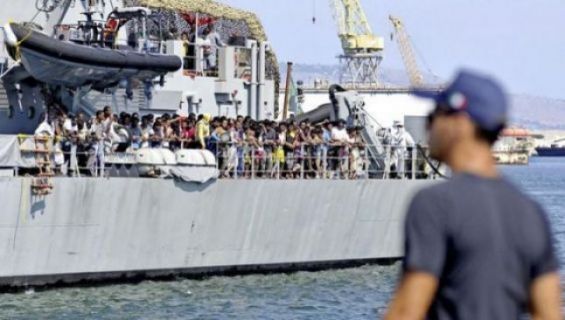On Tuesday, the Spanish Civil Protection intercepted a boat that was carrying 36 migrants and heading to the Canary Islands, wrote Spanish newspaper La Provincia. Earlier that day, the Spanish authorities prevented a boat with 28 migrants from reaching the Gran Canaria island.
These rising numbers of arrivals have been worrying to Spain, especially the Spanish autonomous community off the coast of Morocco. While Mediterranean migrant arrivals dropped by 50% in Spain, those heading to the Canary Islands increased dramatically.
Figures show that the number of migrants taking the Atlantic Ocean route to reach the Spanish territory has increased by 21% during the last ten months of 2019 compared to the same period in 2018. This trend was marked in by the rescue of 495 people, almost one-third of all rescued migrants (1,470 in total).
History repeating itself
Spanish media had already been referring to the Canary Islands as the new route of irregular migrants. The mafia that controls this lucrative market has obviously set sail for the archipelago. The measures taken by Morocco to secure the Mediterranean have indeed forced these networks to turn to the Canary Islands, wrote La Vanguardia. The scenario of 2006 could thus be repeated, with a high number of casualties.
Earlier in November, rescue services in Lanzarote recovered the dead bodies of nine young Moroccans one day after a boat left Agadir for the Canary Islands. In Laayoune and Dakhla, local media has been reporting the death of several migrants attempting to reach the islands.
Unlike the Mediterranean route, the new one is a real danger for migrants. Crossing takes a longer period as migrants have to cross more than 1,000 kilometers when departing from Rabat or Kenitra. The harsh weather when navigating the Atlantic can also lead to deadly situations. On the other hand, the prices for boarding the boats have increased, the same media added.
In 2006, more than 32,000 migrants, mainly from Morocco, Mauritania and Senegal, reached the shores of the Canary Islands. This number declined significantly thanks to the contribution of Morocco in combatting the phenomenon.
In July 2006, Rabat hosted the first Africa-European Union Interministerial Conference on migration. At the time, Spain's Prime Minister Jose Luis Zapatero had given priority to the Kingdom, with a revision of his country's position on the issue of Western Sahara.
Morocco has not received the total €140 million promised by the European Union to help reduce the number of migrant arrivals.





 chargement...
chargement...













